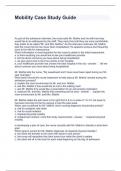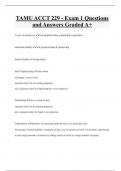WHAT IS GLOBALISATION?
3.2.1.1 Globalisation
Dimensions of globalisation: flows of capital, labour, products, services and information; global marketing; patterns of
production, distribution and consumption.
Factors in globalisation: the development of technologies, systems and relationships, including financial, transport,
security, communications, management and information systems and trade agreements.
Globalisation: a process of opening world trade and markets to TNCs and an increasingly
interconnected world.
Also, the effects of this on people, culture, political systems, the environment & the quality of
life of people
Economic Globalisation: Interconnected through the exchange of resources and money
Ecological Globalisation: Earth is a single ecosystem rather than a group of separate
Political Globalisation: Prevent and manage conflict
Cultural Globalisation: Sharing ideas and knowledge of cultural norms
Key events in Globalisation Timeline Millennium
Broadband Development China to
internet Goals become worlds
World Bank First available for 2nd largest
launched
set up Windows homes Tesco (UN) Twin Facebook economy
Jamaicans to UK joins EU PC opens in Asia Towers
UK (Windrush)
1944 1948 1973 1990 1996 1998 2000 2001 2004 2011
Factors of globalisation
Technology
Cheap, reliable, nearly instantaneous communication
Money flows electronically around the world
HICs invest in LICs to take advantage of cheaper production cost
Technology ignores political boundaries when connecting people and places
Mobile phones- advertising
Flows of products and labour
Transport is cheaper & more efficient
High speed rail networks, containerisation, airports
People moving for work
Tourists travel further due to marketing & low-cost flights
Flows of services and global marketing
Services follow flows of capital, people & products
Marketing is globalised
TNCs use the same adverts in different parts of the world
Global products (e.g. Nike) rely on common global brand with same identity everywhere
Patterns of production, distribution & consumption
TNCs dictate where products are made (often LICs)
Products distributed around world to meet demands of consumers in HICs
Security
Issues of cyber security
2016: leak of 11.5million financial & legal records
Trade agreements
WTO oversees 97% of trade- ensures agreements are followed
Containerisation: System of standardisation that uses large, standard sized containers for transport
, This has improved the flow of goods over long distances, while commercial jet aircraft and
super freighters have also had an impact
There are 17 million shipping containers in the world and always 5-6 million shipping
containers in transit
Flows of products in recent decades:
o Manufacturing has fallen in HICs e.g. UK fell from 5 mil (1985) to 2.6 mil (2014)
o Lower labour costs overseas have caused any companies to relocate the production side
of their business abroad – they then import the products to the countries where they’re
sold
Factors of production: Research, Land, Labour, Capital, Enterprise
These help to ensure globalisation has the potential to create better opportunities for growth
across the world, benefiting the developed nations.
Helping to improve the opportunities for not only the wealthier nations but so the poorer ones
can benefit too.
Labour availability and skills - countries such as India have lower labour costs (about a third of that
of the UK) and high skill levels. Labour intensive industries such as clothing can take advantage of
cheaper labour costs and reduced legal restrictions in LEDCs.
Flows of Services
Many of the high-end services are in Global Cities such as London, New York, or Tokyo
Controlled by conglomerates (a large company made up of smaller independent businesses)
Recently, companies outsourced low level aspects of services e.g. call centres to India
o Low labour costs = more profit
o Some companies have reverted to HIC based call centres due to complaints
Flows of information
Governed by the movement of people through migration and by the speed of data and
communication transfers
o Responsible for the transfer of cultural ideas, language, industrial technology, design,
and business management support
Digitisation and satellite technology have transformed these flows of information, which are
now supported by:
o Global telephone networks (communication is cheaper & easier)
o Mobile telecommunication technology
o Email and the internet (enable large amounts of information to be exchanged instantly
across the globe)
o Live media coverage available on a global scale because of satellite technology.
Costs have come down- many Africans now have a mobile phone.
Software has also aided the flow of information and it has made global sharing of information a
regular daily occurrence
High-tech industries need the exchange of ideas and flow of expertise to flourish.
Foreign Direct Investment: the amount of capital invested in foreign countries
TNC’s investing in infrastructure in LIC
Repatriation of Profits
Economic leakage
o EXAMPLE: Nike invested huge amounts on production in Indonesia, but other than low
wages and basic rent, the $BN profits made around the world make their way back to
the USA
INTERDEPENDENCE & UNEQUAL FLOWS OF PEOPLE











